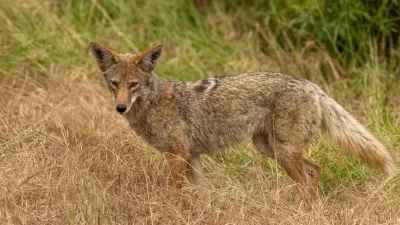A recent study concludes that investment in wildlife refuges leads to economic rewards.
Focusing on the Northeast, Southeast and California-Nevada regions, "a recent study [PDF] by North Carolina State University researchers for the U.S. Fish and Wildlife Service found that metro-area homes near wildlife refuges are worth more than those farther away from these havens." The increases in property values are substantially higher than that of properties in close proximity to open spaces such as parks, which averaged a paltry 2.8% increase. Properties close to wildlife refuges in the Southeast region, for example, saw a 7-9% increase in property values.
Furthermore, the economic benefits reported by the study fail to take into account the substantial tourist spending generated by these refuges. The New York Times points out that "34.8 million visits to American wildlife refuges in fiscal 2006 generated $1.7 billion in sales, nearly 27,000 jobs and $542.8 million in employment income in regional economies."
With refuges under threat of sale and development from House Republicans, this new data may be their saving grace. Communities surrounding refuges reap rewards in employment and income; thus the refuges provide a haven not only for its creatures and plants, but also for the people who live and work nearby. Armed with this information, those more economically inclined may decide that the preservation of these refuges can effectively ensure positive economic outcomes.
FULL STORY: Wildlife Refuges Are Economic Engines

Maui's Vacation Rental Debate Turns Ugly
Verbal attacks, misinformation campaigns and fistfights plague a high-stakes debate to convert thousands of vacation rentals into long-term housing.

Planetizen Federal Action Tracker
A weekly monitor of how Trump’s orders and actions are impacting planners and planning in America.

In Urban Planning, AI Prompting Could be the New Design Thinking
Creativity has long been key to great urban design. What if we see AI as our new creative partner?

King County Supportive Housing Program Offers Hope for Unhoused Residents
The county is taking a ‘Housing First’ approach that prioritizes getting people into housing, then offering wraparound supportive services.

Researchers Use AI to Get Clearer Picture of US Housing
Analysts are using artificial intelligence to supercharge their research by allowing them to comb through data faster. Though these AI tools can be error prone, they save time and housing researchers are optimistic about the future.

Making Shared Micromobility More Inclusive
Cities and shared mobility system operators can do more to include people with disabilities in planning and operations, per a new report.
Urban Design for Planners 1: Software Tools
This six-course series explores essential urban design concepts using open source software and equips planners with the tools they need to participate fully in the urban design process.
Planning for Universal Design
Learn the tools for implementing Universal Design in planning regulations.
planning NEXT
Appalachian Highlands Housing Partners
Mpact (founded as Rail~Volution)
City of Camden Redevelopment Agency
City of Astoria
City of Portland
City of Laramie





























